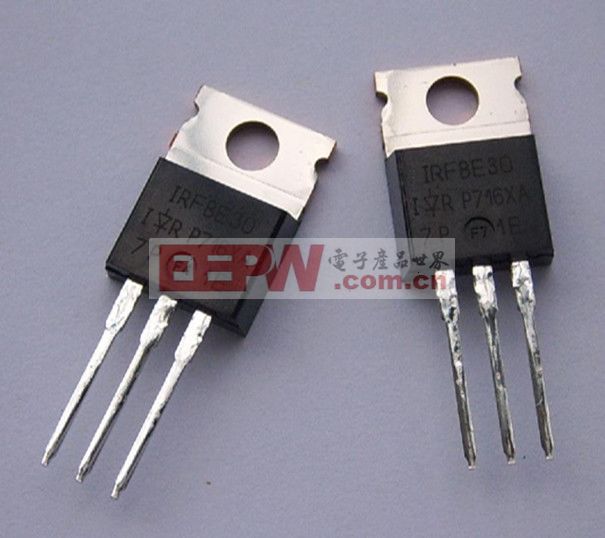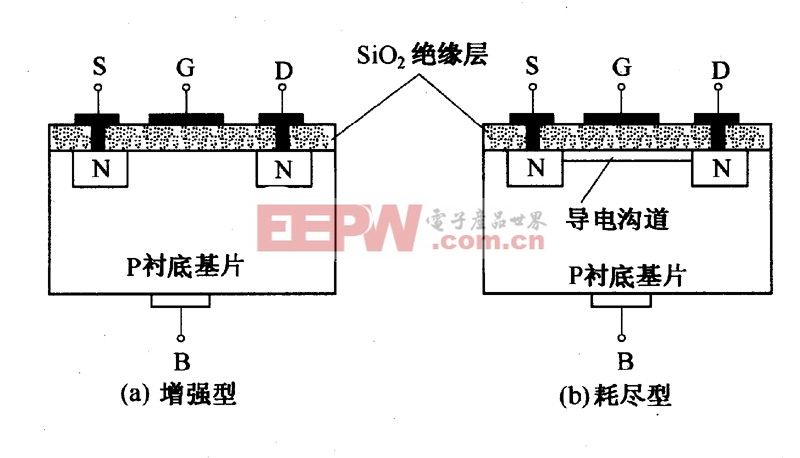First, the working principle of FET - concept
A Field Effect Transistor (FET) is a type of voltage-controlled semiconductor device that regulates the flow of current in the output circuit by using an electric field. Unlike bipolar transistors, which rely on both electrons and holes for conduction, FETs use only one type of charge carrier—hence, they are also known as unipolar transistors. This makes them ideal for applications where low power consumption and high input impedance are required.

FETs have several advantages, including small size, lightweight, long lifespan, and very high input resistance (up to 10â·â€“10¹² Ω). They also offer low noise levels, good thermal stability, strong resistance to radiation, and lower power consumption compared to other transistor types. Since their introduction in the 1960s, FETs have become widely used in various electronic circuits, from amplifiers to digital logic systems.
Second, the working principle of FET - structure
All FETs have three main terminals: the gate (G), drain (D), and source (S). These correspond to the base, collector, and emitter of a bipolar junction transistor (BJT). In addition, most FETs have a fourth terminal called the body or substrate. The region between the drain and source is referred to as the conductive channel, while the area near the gate forms a depletion layer when a reverse bias is applied.
Third, the working principle of FET - classification
FETs can be broadly classified into two types: Junction Field Effect Transistors (JFETs) and Metal-Oxide-Semiconductor Field Effect Transistors (MOSFETs). JFETs are named for the PN junctions at the gate, while MOSFETs have an insulating layer (typically SiOâ‚‚) between the gate and the semiconductor. Because the gate of a MOSFET is made of metal, it is sometimes referred to as a MOS transistor.
Another way to classify FETs is based on their conduction mode: depletion-type and enhancement-type. Depletion-type FETs have a conductive channel even when no gate voltage is applied, while enhancement-type FETs require a specific gate voltage to create a channel. Both types can be either N-channel or P-channel, depending on the semiconductor material used.

Fourth, FET working principle - junction type
Let’s take an N-channel JFET as an example. To operate properly, a negative voltage (uGS < 0) must be applied between the gate and source to create a reverse-biased PN junction, forming a depletion region. When a forward voltage (uDS) is applied between the drain and source, current flows through the channel. As the gate-source voltage becomes more negative, the depletion region widens, narrowing the channel and increasing its resistance, thus reducing the drain current (iD). Conversely, a less negative gate-source voltage reduces the depletion region, allowing more current to flow.
For a P-channel JFET, the operation is similar but with opposite polarity. A forward voltage (uGS > 0) is applied between the gate and source to allow normal operation.
Fifth, FET working principle - insulated gate
An N-channel depletion-mode MOSFET has a conductive channel even when no gate voltage is applied. This is due to the presence of positive ions in the oxide layer during manufacturing, which induce an inversion layer on the surface of the P-type substrate. When a forward voltage is applied between the drain and source, current flows. Applying a positive gate voltage increases the inversion layer, reducing the channel resistance and increasing the drain current. If the gate voltage becomes too negative, the inversion layer disappears, and the channel is cut off.

Sixth, FET working principle - enhancement type
In an N-channel enhancement-mode MOSFET, a positive gate-source voltage is required to create a conductive channel. The positive voltage attracts free electrons from the body toward the gate, forming an inversion layer. Initially, some electrons are needed to neutralize the dopant ions, creating a depletion region. Once enough electrons are attracted, the inversion layer becomes conductive, allowing current to flow from source to drain. This process is known as "inversion."
Seventh, FET working principle - depletion type
In an N-channel depletion-mode FET, applying a negative gate-source voltage expands the depletion region, narrowing the channel and increasing the resistance. If the depletion region becomes large enough, the channel is completely closed, and the FET turns off like a switch. For a P-channel depletion-mode FET, a forward voltage between the gate and source widens the channel, reducing resistance and allowing more current to flow.

There are many types of FETs, each with unique characteristics and applications. Whether you're interested in basic principles, advanced design, or real-world applications, there's always something new to learn about these essential components. Here are some related topics you might find interesting:
- 1. FET working principle
- 2. MOSFET working principle
- 3. Field effect transistor amplifier
- 4. MOS tube working principle, it's so simple
- 5. The development trend of CMOS field effect transistors
waterproof ac adapter,waterproof 12v dc power supply,water clarifier power adapter,Waterproof power supply
FOSHAN SHUNDE KELICHENG POWER SUPPLY TECHNOLOGY CO., LTD , https://www.kelicpower.com